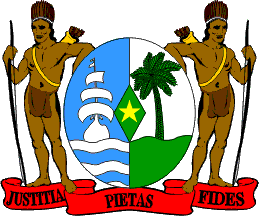Some additional information:
Winti is an Afro-Surinamese religion with a supreme being who has withdrawn from the world and a pantheon of lesser gods. Belief in an immortal soul and the ancestor worship connected with it play a central part in the religion of the Creole population. The music linked to the religious practices is a Surinamese variant of the West African tradition, handed down from the period of slavery, of ritual drum music and dancing before the wintis, the demigods who move as fast as the wind. Each of the wintis has special rhythms and songs by which he or she can be summoned. Their presence manifests itself in the trance dance in which a winti temporarily takes possession of someone's personality. This can happen during a healing ritual, but also at a celebration.
Another form of Creole folk music related to Winti music is Kawina, which arose after the abolition of slavery in 1863. At the beginning of the last century Kawina developed into a major form of popular music for people from the city and the coastal areas of Surinam. Its texts are about all sorts of subjects from everyday life, but mainly about the relations between men and women and about public scandals. They are primarily entertaining songs to dance to, with long instrumental interludes of improvisation by the percussion ensemble. Aside from the texts, the main difference to Winti music is in the instruments and times used and the greater freedom to improvise which the drummers and lead singer enjoy.
What Winti and Kawina have in common is the call of a lead singer, alternating with a chorus which responds with a harmonized refrain, and the interacting rhythmical patterns. These elements also form the building blocks of popular Kaseko music.
Source:http://www.myspace.com/yakiez
CHECK OUT SURINAME DAY IN NEW YORK















